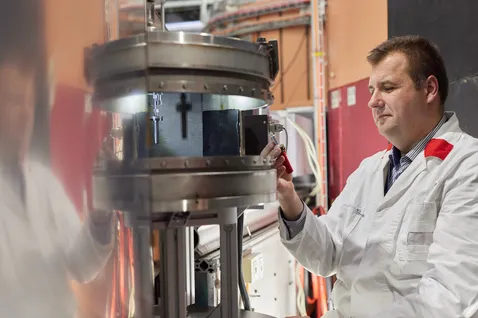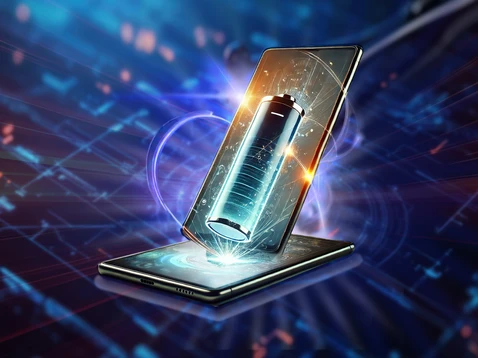Towards More Efficient Batteries
Aktuell, Wissenschaft, SPODI |

The rechargeable lithium-ion battery is a revolutionary technological solution that already provides electric power to many types of mobile devices for a reasonable length of time. Nevertheless, there is room for improvement, including lifetime, safety, and cost.
Cathode loses charge capacity
International researchers precisely determined the exact mechanisms behind the deterioration of the batteries’ performance during use. To find out why the commonly used cathodes lose their charge capacity upon continuous operation, characterization of the cathode material with the desired accuracy, depth, and length scale was required, which led to a highly advanced experimental approach.
Measurements were carried out simultaneously using micro-focused X-ray diffraction and fluorescence tomography, supported by neutron powder diffraction. The crucial feature of this approach is the involvement of machine learning in handling and analysing the resulting extremely large data sets.

Insights into degradation mechanisms
The team monitored various changes induced by the operation of the cathode for 100 charge/recharge cycles, using an extremely high 3D spatial resolution of one micrometre. The fine details observed provided unique insights into the elemental composition variations, chemical phase transformations, and morphological alterations. This made it possible to define degradation mechanisms specific to the selected cathode material, the role of the carbon matrix, and the binder in the battery aging. The conclusions pave the way for optimising the composite cathode materials towards higher efficiency and sustainability.
Original publication
W. B. Hua, J. N. Chen, D. F. Sanchez, B. Schwarz, Y. Yang, A. Senyshyn, Z. G. Wu, C. H. Shen, M. Knapp, H. Ehrenberg, S. Indris, X. D. Guo, X.P. Ouyang, Probing Particle-Carbon / Binder Degradation Behavior in Fatigued Layered Cathode Materials through Machine Learning Aided Diffraction Tomography, Angew. Chem. Int. Ed. 63, e202403189 (2024) DOI: 10.1002/anie.202403189
Further information
Experiments were carried out at MSPD, ALBA, Spain; P02.1, PETRA III / DESY, Germany; X05LA, SLS / PSI, Switzerland and SPODI, MLZ.